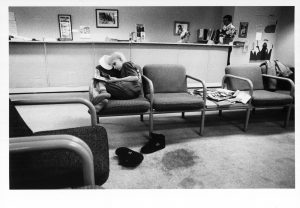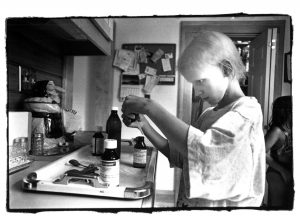There are a variety of reactions I get to my prosthetic when it’s out in plain sight. There is this reaction that happens with parents and children that I struggle with, and it happens with enough frequency that it is worth comment.
On one recent occasion I walked into a fruit shop on a Sunday afternoon – post climbing, clad it shorts, hiking boots, a T-shirt, and more than a bit of dirt. The place was busy, as expected, and there was a mother, and her child of about four years of age just down the aisle from me when I walked through the door. The child looked at my leg, gave her mom’s skirt a tug, and pointed. The mother pushed the child’s hand away and then used her other hand to turn the child’s head away from my direction. The child kept craning her head to look back, while the mother’s hand continued to oppose the turning of the child’s head. These types of interactions happen fairly regularly. There is one time I remember quite distinctly when the parent loudly ‘shhhhuusshed’ the child while standing no farther than five metres from me.
Over time I have come to try to connect with the children involved in these interactions. I see the parents, who I believe are suspended in fear and embarrassment, as being beyond my reach. On this occasion I made eye contact with the child and smiled, in hopes of acknowledging her curiosity and letting her know that I am a person much like her, just a little less symmetrical.
When I’m feeling less tolerant I am tempted to walk up to the parent and say something to the effect of ‘I may have one leg but I also have two eyes, and they work just fine. And just so we are clear, I see you.’
There exists no social script for such scenarios. I walk away from these encounters feeling disheartened. I’m not sure what the ‘right’ reaction is to a child’s curiosity about a physical characteristic that deviates from normal, and I doubt there is a ‘right’ reaction, but I believe that this kind of encounter sheds light on the pervasiveness of stigma in our society, and the ways in which it is fostered in children. I often wonder if there is any further discussion when these families go home.
My hope is that this blog helps to counter some of the stigma that has become so common in polite society. After 20 years with a prosthetic leg I have come to believe that by failing to talk about it openly and that by concealing it in public, I help maintain that stigma. I do not want that to be my contribution.

 © Cathie Coward
© Cathie Coward © Cathie Coward
© Cathie Coward © Cathie Coward
© Cathie Coward